Sweet pepper belongs to the annual thermophilic garden crops. It is rich in trace elements, carotene, and vitamin C. Thanks to the use of sweet pepper, BP comes back to normal, the immune system strengthens, and the gastrointestinal tract improves. In addition, the vegetable has good taste, unpretentious in growing, resistant to various types of diseases.
With the right choice of variety, compliance with agrotechnical conditions, as well as with the appropriate content, the vegetable can be successfully cultivated even in a difficult Siberian climate. The best varieties of sweet pepper for cultivation in Siberia - these are mid- and early ripening varieties, they can be grown in greenhouses and even on open ground.
Content
Climatic conditions and features of pepper breeding in Siberia
Siberia is one of the coldest corners of the Earth, which has a continental climate with large differences in daily temperatures. The territory is remote from the seas and oceans, surrounded by mountains that impede the passage of warm air currents. Only the western and southern parts of Siberia are distinguished by a positive average annual temperature; in the rest of the territory it is almost always below the zero mark.
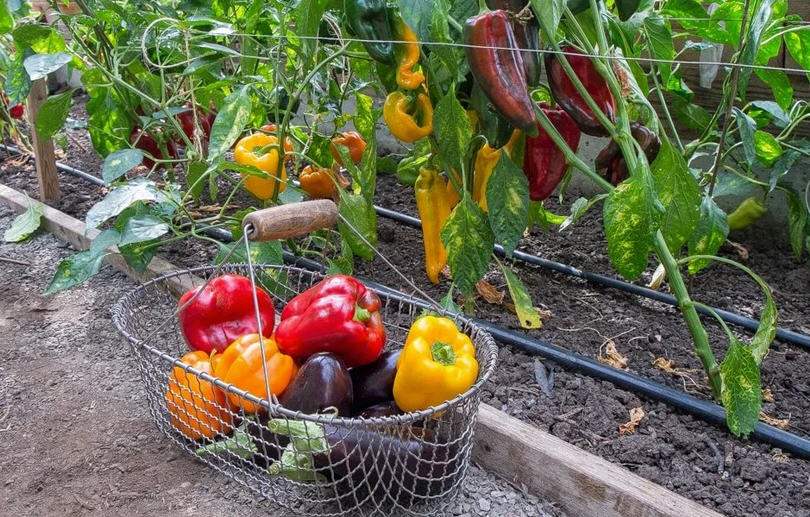
Given these climatic conditions, many breeders have devoted their activities to the development of new types of crops, including lettuce, adapted for cultivation in harsh terrain.
Since the summer in the region is very short, they will be suitable for cultivation early ripening varietiesthat reach ripeness in a short period of time. Mid-season varieties with ripening periods from 95 to 120 days also manage to ripen in a short summer period. Moreover, their productivity is quite high. When choosing sweet pepper seeds, preference should be given to those breeding crops that have been specifically bred for breeding in such a climate.
Choosing the best variety of pepper for cultivation in Siberia
The most demanded by vegetable growers high-yielding varieties of early and mid-season pepper, bred by breeders for cultivation in Siberia:
- Siberian prince;
- Topolin;
- Siberian format;
- Gingerbread man;
- East market;
- Siberian bonus;
- Tusk.

Moreover, all these varieties are intended for cultivation in open ground and in greenhouses or greenhouses.
Resistant varieties for open ground
When buying seeds of a sweet vegetable for growing in the open field, one should take into account the short duration of the Siberian summer and the lack of the necessary temperature for good ripening of fruits. Therefore, it is necessary to give preference to persistent rennese or hybrid vegetable crops.
Most resistant to growing in the open ground of the Siberian region it could be considered:
- Gingerbread Man. An early type of salad pepper bred by the Moldavian Research Institute. The bush of the plant is undersized, compact.On each bush, up to 4 pieces of fruit ripen, differing in good taste, meatiness. The weight of each fruit reaches 90 g. Due to its taste, this variety is ideal for salads, fresh and canned. It can be grown in open beds and in greenhouse conditions.
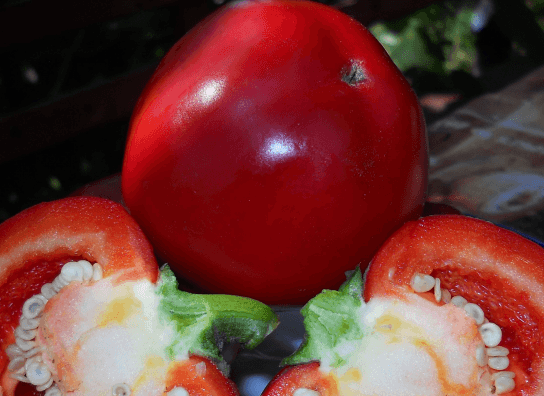
Gingerbread man - Topolin. A wonderful early ripe variety, characterized by high productivity (40-50 t / ha), large (up to 150 g) fruits, resistance to various diseases (bacterial, putrefactive, mold) and temperature extremes. Bushes are tall, in need of garter or in cultivation on a trellis with the formation of stems. The fruits of the conical shape appear 110-120 days after sowing seeds in the ground. Fully ripened fruits have a dark red color.
- Siberian prince. Refers to early ripening varieties, allows you to collect a high yield in 105-110 days after germination of the crop. Feels great on open beds. Bushes are tall and powerful, sometimes exceeding 1 m. Requires garters to the support. Fruits are cone-shaped, juicy, with dense fleshy pulp, weighing up to 150 g. It is universal in application: for preservation, freezing, stuffing, fresh consumption, in salads.
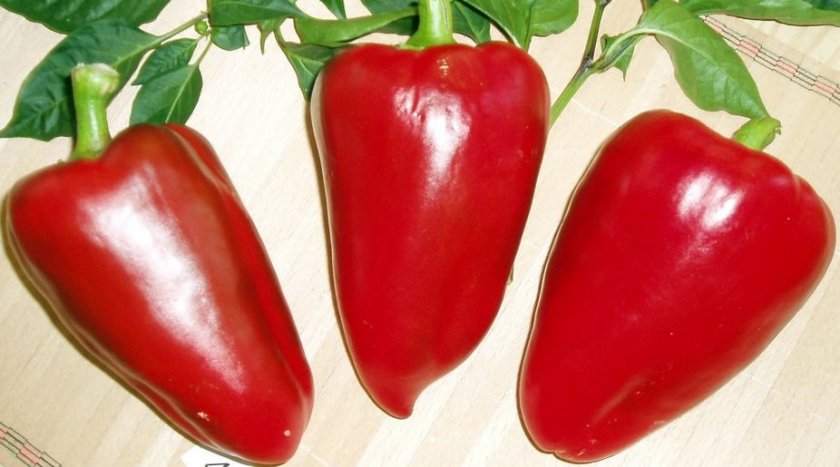
Siberian prince - East market. Bred by domestic breeders and refers to mid-early vegetable crops. Well established for landing in open soil. The bush is low, compact (up to 50 cm). The fruits have a bright red color and a pleasant aroma, prismatic with increased ribbing. Large enough - weighing up to 150 g. Suitable for home cooking, cooking various dishes, freezing.
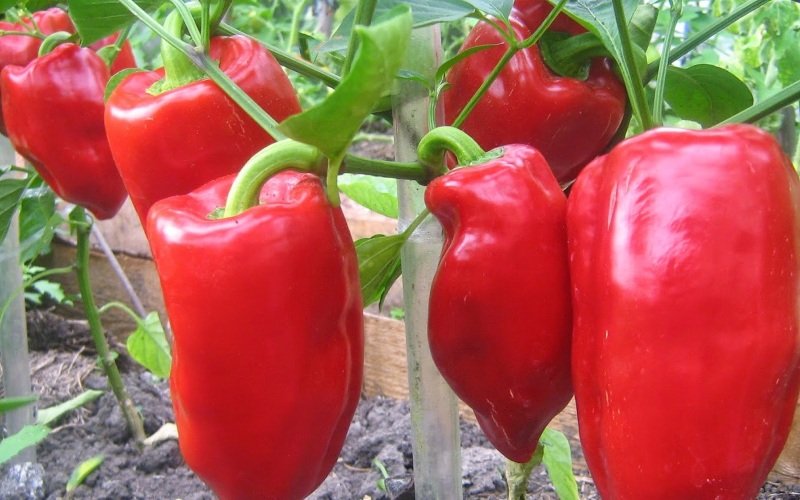
East market
Early varieties for greenhouses
Among the most fruitful early varieties for Siberia worth mentioning:
- The first-born of Siberia is a wonderful high-yielding variety (up to 12 kg / m2). It is grown in greenhouse conditions, as it is very susceptible to temperature conditions. The bush is stunted, does not exceed 45 cm. The fruits are bright yellow and red, fleshy, juicy, pyramidal, reach a weight of 70 g and 9 cm in length each. Fruit ripening occurs 100-110 days after planting in the ground. It has a pleasant taste, rich aroma and sweetness.
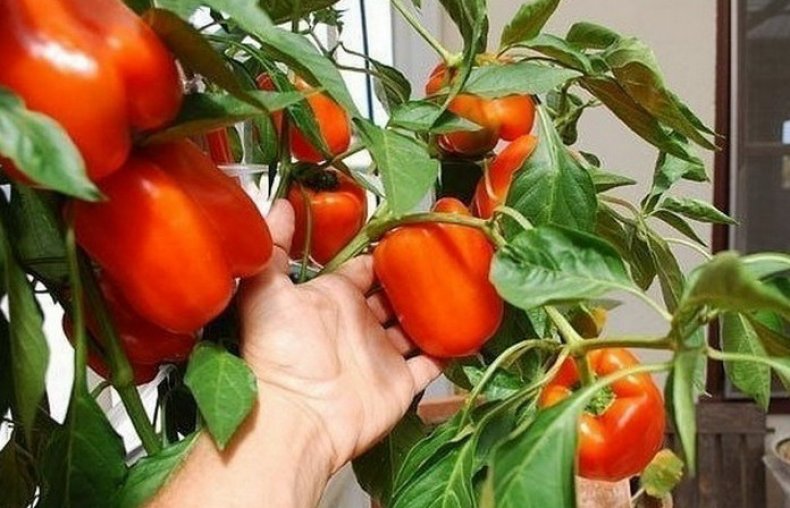
Firstborn of Siberia - Novosibirsk. Especially popular for cultivation in closed ground is this precocious variety, bred specifically for the conditions of Siberia by breeders of the Central Siberian Botanical Garden. Sowing of seeds is carried out in February, and after several months, when the seedlings get stronger, they are planted in greenhouses.
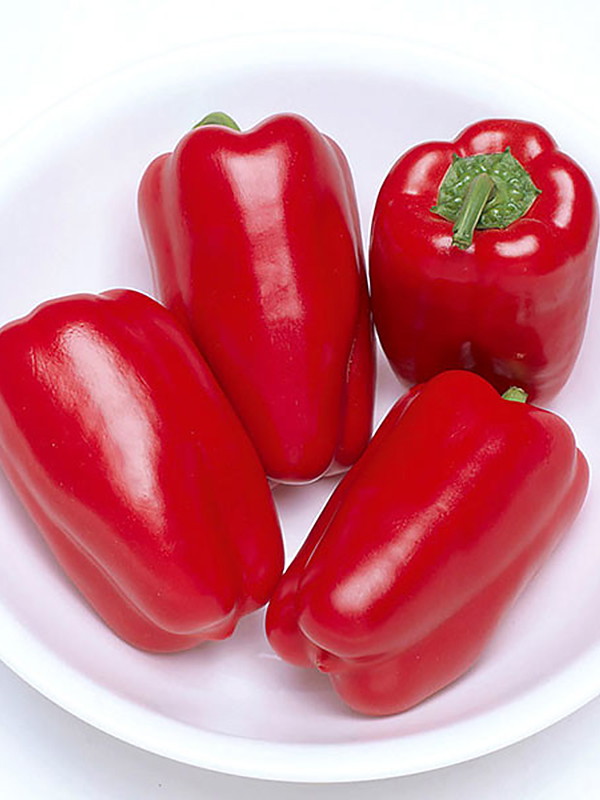
Novosibirsk After 100 days, the fruit ripens. The bushes are tall (100 cm), the mass of bright red fruits reaches 60 g. Peppers are distinguished by a special taste, fresh aroma, which gives it advantages over other varieties of peppers in the preparation of salads, preservation. With the right content, timely top dressing, productivity can reach 10 kg / m2.
- Siberian. This variety is promising when grown in various types of greenhouses, heated or unheated, as well as winter. From the beginning of planting to fruit ripening, 115 days pass. The bush of pepper is low (60 cm) with cuboid fruits of red color, very fleshy and large (up to 150 g), easily transportable. With good care, the plant gives an excellent crop, but even in adverse conditions, it is possible to collect up to 7 kg from one square meter of planting material. Sibiryak is one of the varieties of vegetable crops listed in the State Register of Selection Achievements.
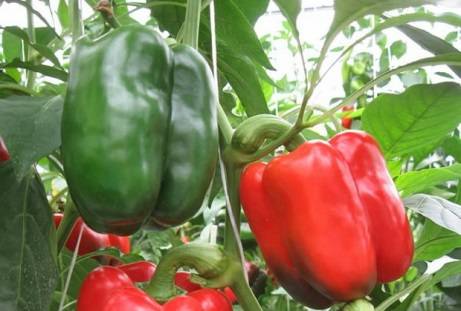
Siberian
The most fruitful varieties of pepper for greenhouses
Given the short summers and long periods of frost in the spring, the most effective way to grow the most fruitful varieties of pepper is to plant seedlings in greenhouses or in greenhouses.
In greenhouse conditions, it is recommended to grow precocious and artificially bred hybrid varieties of peppers. In this case, you must pay attention to the seed material, which is suitable for cultivation in greenhouses of Siberia.
The most promising and high-yielding for cultivation in a greenhouse include:
- Cardinal F1 is a tall hybrid with large (up to 280 g) fleshy fruits from dark green to dark purple;
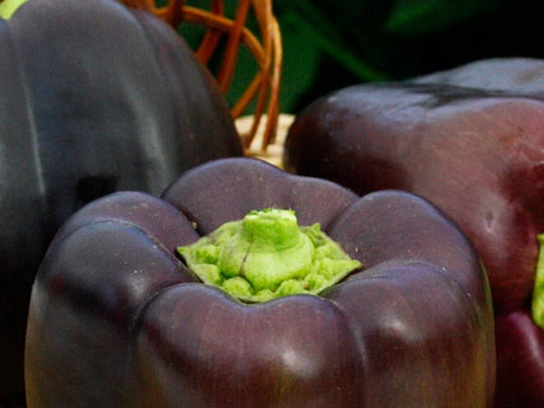
Cardinal F1 - Latino F1 - a high-yielding hybrid (up to 14 kg / m2) with bright red fruits, weighing up to 200 g. The pulp is juicy, fleshy, with a bright aroma. Maturing term - 110 days;
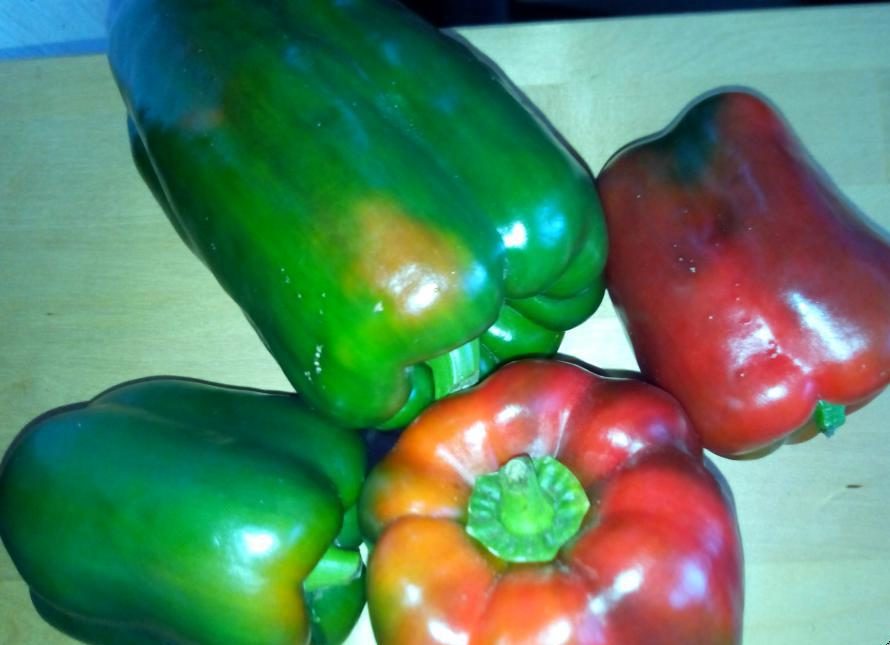
Latino F1 - Fidelio F1 is an ultra-early hybrid with a fruit ripening period of up to 90 days. Fruits are bright yellow in color, weighing up to 170 g, juicy pulp. Bushes reach a height of 90 cm. Productivity - more than 14 kg / m2.
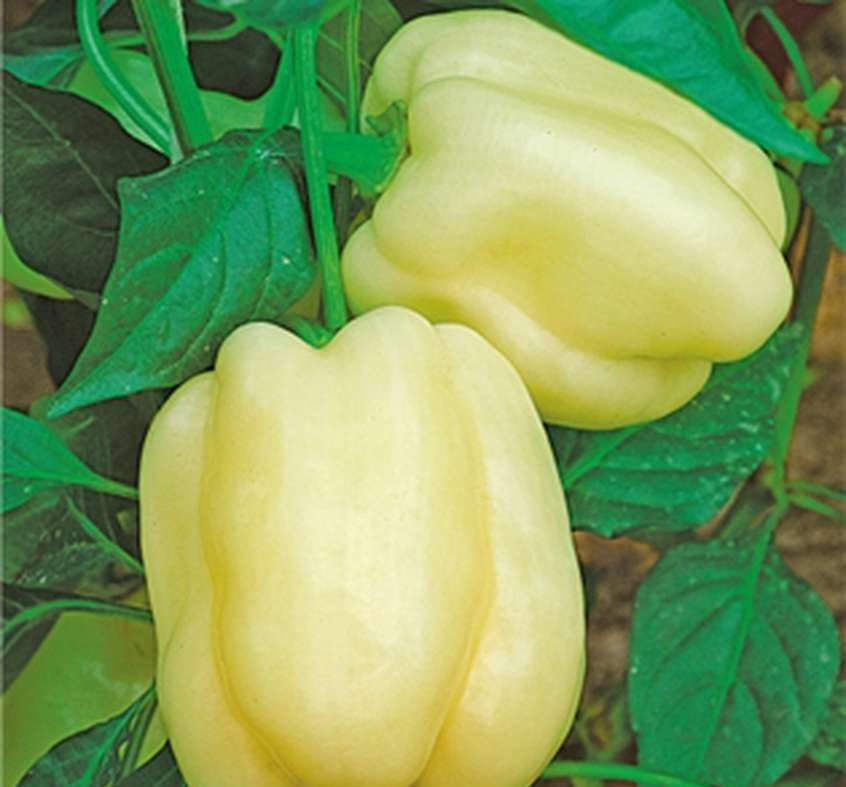
Fidelio F1
All varieties are suitable for fresh and thermally processed form, for preservation, and freezing.
The rules of agricultural technology in cold climates
Even plants adapted for cultivation in cold climates require care in accordance with the rules of agricultural technology.
In the greenhouses
In most Siberian open spaces, sweet pepper cultivation is effective in film or polycarbonate greenhouses. Agricultural technology of closed soil has its own characteristics that you need to know before you start growing pepper in a greenhouse.
Landing dates depend on weather conditions. Seedlings can be planted only after an established temperature of 10-12 ° C. In the south of Siberia, this temperature is set in April-May. In the presence of "warm" beds, the dates can be postponed 3-4 weeks earlier.
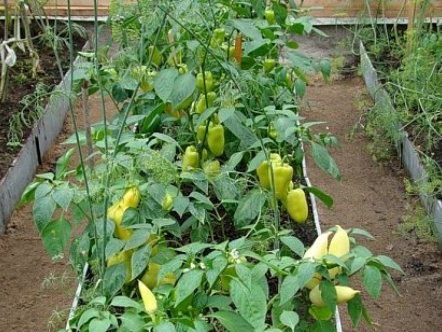
Landing patterns can be different:
- Tape.
- Square-nested.
- Chess way.
Such planting methods help to save space in the greenhouse, as well as provide them with comfort.
In case of violation of these parameters, it is necessary to take measures:
- In case of sudden frosts and lowering the temperature below 10 ° C, the beds are covered with a spanbond.
- In extreme heat and at a temperature of 35 ° C, in addition to airing, additionally cover the crops with a shading net.
- With high humidity, the greenhouse is also aired, and with insufficient humidity, water containers are placed or placed in the greenhouse.
For irrigation use well-maintained tap water. It is important that the water does not fall on the leaves.
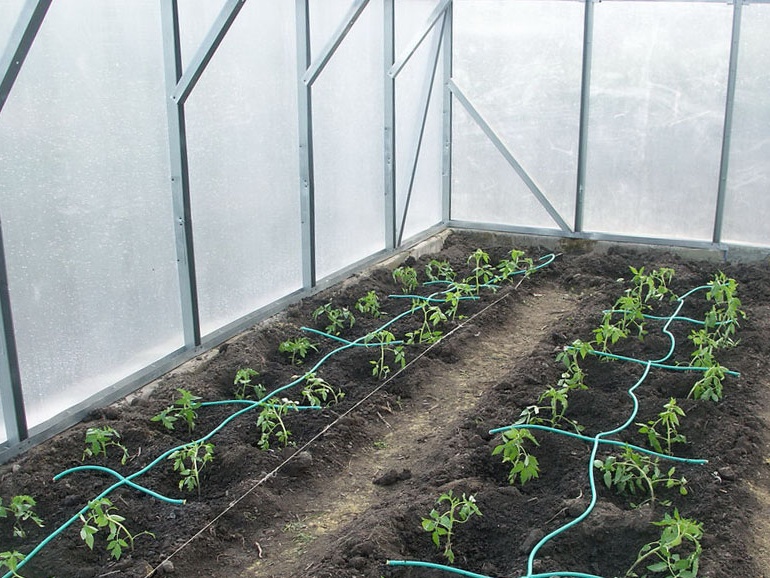
The soil after watering is gently loosened so as not to damage the thin surface roots of the plant. Then the soil is mulched with hay, sawdust, peat in order to prevent moisture evaporation. With proper agrotechnical cultivation of peppers, one should not forget about their fertilizing with organic and mineral potash fertilizers.
In open soil
On unprotected beds seedlings are planted on the 20th of May. Since frosts are still possible, beds with plants must be covered with a special material, and on top with a film. On very warm days, the beds open for ventilation. After the frost leaves, the covering material can be removed.
Some time after watering, the beds are carefully loosened so as not to damage the root system of the vegetable crop. If necessary, plants are fed a solution of ash. In steadily hot weather, it is necessary to organize abundant watering up to 5 times a week.
Ripe fruits should be harvested immediately, as they inhibit the further development of plants and the ovary of new fruits.
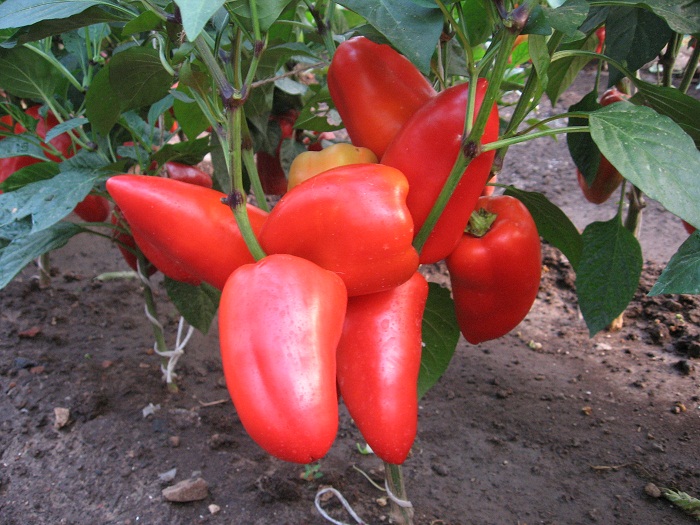 You may be interested in:
You may be interested in:Common Growing Questions
Properly selected varieties of sweet pepper, compliance with all agrotechnical measures will allow you to get a high yield of this vegetable crop, even in severe climatic conditions of Siberia. Specially bred varieties can be grown in greenhouse conditions and open ground.

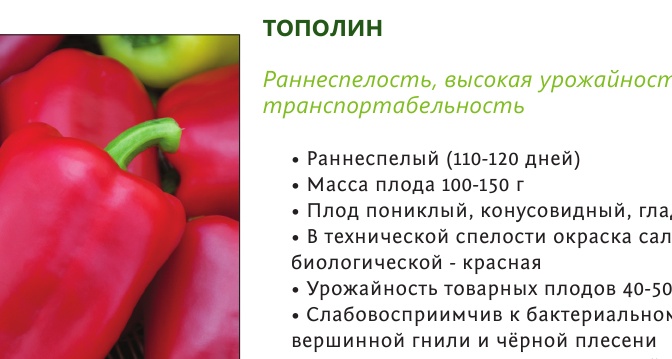



 Calorie pepper stuffed with meat and rice - BZHU per 100 grams
Calorie pepper stuffed with meat and rice - BZHU per 100 grams Gorky pepper - the best varieties for open ground
Gorky pepper - the best varieties for open ground Hot pepper seeds - the best varieties for open ground and reviews
Hot pepper seeds - the best varieties for open ground and reviews Capsicum tincture for hair - how to use and reviews
Capsicum tincture for hair - how to use and reviews